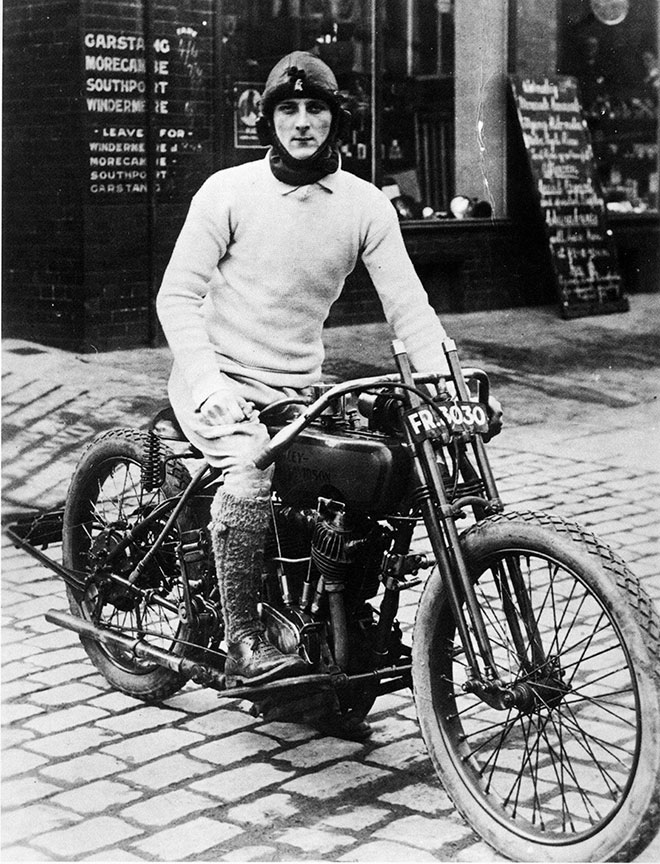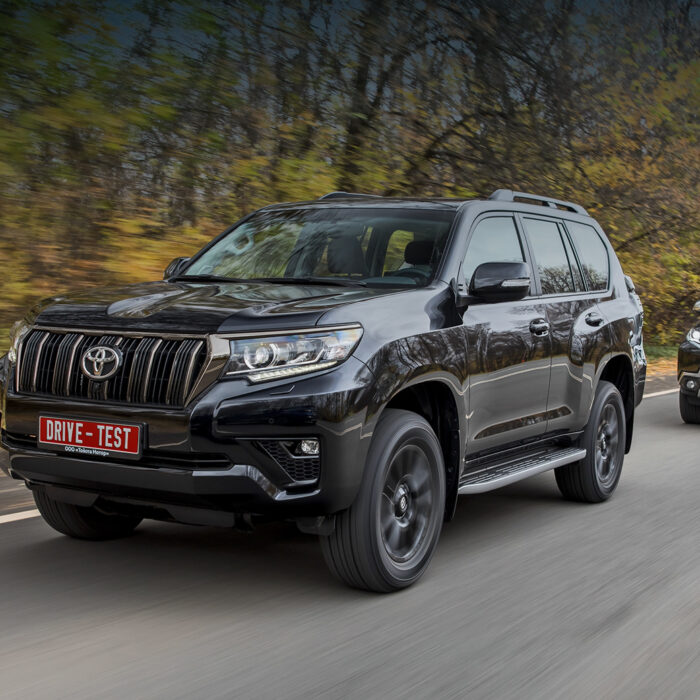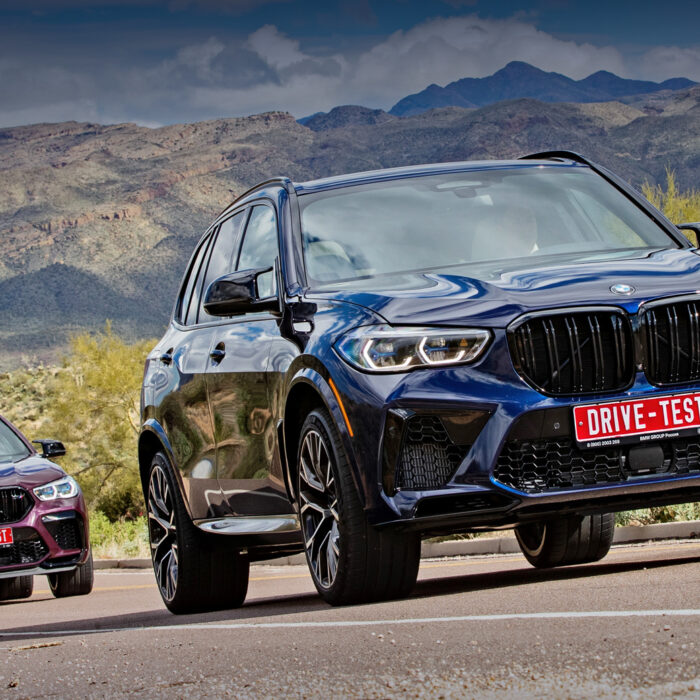The British automobile corporation Jaguar Land Rover was founded almost a hundred years ago – in 1922. Today, it, that produces both sports cars and luxury executive cars at the level of Bentley and Rolls-Royce, is owned by Indians from the firm Tata Motors. But Jaguar was and remains a great automobile brand whose historical milestones deserve attention and respect. Let’s look at the stages of this company’s development in more detail.
Founding fathers
Two Bills (Williams), Lyons and Walmsley, are “guilty” of the birth of the brand. It was they who on September 4, 1922, on the northern coast of Britain, in the town of Blackpool, founded a company that produced sidecars. The latter were so elegantly shaped that they were called “Swallow”. At that time, the car company was called Swallow Sidecar. The company was abbreviated as SS Cars Ltd.
William Lyons was born in England on September 4, 1901 in a family of immigrants from Ireland. His father, William Lyons, owned a musical instrument shop; his mother, Minnie Barcroft, was the daughter of a mill owner. The small town of Blackpool on the Irish Sea became the birthplace of the one who would later be called Mr. Jaguar. Bill Walmsley, who was 30 years old, moved in next door to the motorcycle enthusiast.

Bill Lyons met another Bill when he was still a minor under English law. When he turned 21, he bought a modest property on two floors of a large building, and together with Bill Walmsley and several workers started the production of sidecars that Bill II designed. Bill Lyons, despite his youth, was very pragmatic – he immediately grasped the production organization prospect, evaluated its potential. His vision and business acumen allowed him to become an excellent organizer of the main directions of the company. The business picked up: stylish sidecars made of polished aluminum at a cost of 28 pounds began to be in great demand. They were sold out in five minutes, ten units a day, production suddenly became mass.

Looking ahead, we note that the partners were unanimous only in the first years of the company’s existence: already in 1934, Bill Walmsley decided to break off relations with Bill Lyons and left the company, establishing his own production of trailers. Lyons, in turn, had worked for Jaguar for about fifty years, and in that half-century he had never departed from the company’s interests. The automobile industry was life’s work and purpose for Lyons. William Lyons is an example of a man who is completely dedicated to his work.
In 1956, Queen Elizabeth II of England awarded Lyons the title of Royal Designer for the Automobile Industry and knighted him. Sir Lyons designed the models himself and at the same time managed the company. He didn’t consider any detail a trifle and knew the production inside and out. Managers were disconcerted by the chief’s awareness: “He seems to know the price of every part, every bolt and nut.” Maybe that’s why his cars were considered high-end.
Only in 1972, William Lyons retired as Chairman and CEO of Jaguar Cars. He took up cattle breeding on his own farm, Wappenbury Hall, and died in 1985. Thirty years earlier, his son John, who was a racing driver, had died. Like his father, he also loved speed…
Let’s go back to 1927
Sidecars, being a curiosity in those years, were sold out by consumers quickly, and soon the owners of the Swallow became owners of a good financial capital. The latter allowed the switch to production of cars on the Austin Seven chassis. Inexpensive Austin Swallows, equipped with two- and four-seat original bodies, were in good demand. The products of the young company Swallow Sidecar immediately attracted the attention of the English consumer with both beauty and elegance, and a relatively low price. The small Austin Seven Swallow was great, although with the body of the Swallow cost a little more than the original, but this car was one of the cheapest “custom” cars. Soon the management received an order for 500 cars from one of the largest London garages. Along the way, the company also produced bodies for the Fiat 509A, the Morris Cowley and the Wolseley Hornet.
While at the very beginning of automobile production 12 cars a week went off the assembly line, in 1928 the firm of two Bills moved to Coventry, where the number of cars produced increased four times – to 50 cars a week. At that time, the Midlands was the center of the British car industry. The company’s managers signed a contract with Standard Motor, which supplied engines and chassis. At the annual London Motor Show in 1929, three new Swallow models were presented for the first time. They were based on the Fiat Tipo 509A, the Swift Ten and the Standard Big Nine. The Standard Swallow was a larger sedan and cost 245 pounds. It featured a more extravagant body style than the manufacturer’s own cars and a wide range of color schemes.
In the early ‘30s, the cars produced were called the S.S.I and the S.S.II. The S.S.I was criticized, called “a parody of a sports car”. Exactly until the moment when Queen Elizabeth sheltered this model in her garage. In July 1933, the coupe was joined by the more spacious and proportional SS I Tourer. It was this car that was awarded the title “The Most Beautiful Car in the World”. In 1934, a new four-window sedan was added to the best models in the series. The car of this model was much less bright and more practical – the passengers sitting in the back had the opportunity to look out the window! In 1935, the model range was expanded by adding the SS I Airline sedan. But that was already without Walmsley. But another Bill joined the company – this time Heynes. He became chief engineer and worked with Lyons for 35 years. The product of Weslake and Haynes’ work became apparent in no time, at the same time, a new very stylish sports car was presented to the public. The model was known as the SS 90 and had a 2.7-liter side-valve engine, although the performance characteristics again didn’t quite match the car’s bright appearance.
In 1935, the name Jaguar first appeared on the scene – that happened simultaneously with the release of a completely new series of sedans and sports cars. It was the SS Jaguar 100 that became a pre-war classic among sports cars. They were cars to be proud of. The price, by the way, was only $395. This model was designed to achieve significant results in competitions, both national and international. It had a metal-mesh radiator and huge headlights, beautiful fenders over large-diameter wire-spoked wheels, a body with a purely English cut-out for elbows (there would have been nowhere to put them in the narrow cockpit), and a sizeable fuel tank covered by a spare wheel. The SS100 was mass-produced until 1939. This car, distinguished by refined body lines, won many times in the popular competitions of elegance in those years, and a powerful engine, partially synchronized gearbox, suspension on semi-elliptical springs, Girling drum brakes and successful weight distribution provided prizes in international rallies and competitions on climbing to high ground. Today, surviving copies of the “Jewish Bentley” (as the SS100 was initially called) are fabulously expensive.

In 1938, the company switched to manufacturing of bodies made of steel rather than aluminum. In the same year, the annual production volume reached the value of 5 thousand cars.
Jaguar in the post-war years
During World War II, the company produced bombers and light SUVs with the Ford engine. After the end of the war, Lyons, anticipating a negative reaction to the name of the company, similar to the name of the elite divisions of the Third Reich, replaced the abbreviation SS with Jaguar Car Limited. The company also parted ways with the production of sidecars.
To participate in the 1948 Motor Show, a new sports model, the XK120, was developed, which was destined to become one of the greatest sports cars of all time. It wasn’t just a race car. The car had the refinement inherent in the Jaguar style, unprecedented comfort for this type of car, and, among other things, its price was only $998 ($1,298 including taxes). The top speed allowed the XK120 to become the fastest mass-produced car in the world with an excellent new chassis and an extremely powerful new engine. Demand for the new Jaguars XK120 exceeded the production capacity, as it was required to produce more than two hundred cars per day. Today you can make fun of the difficult steering and complicated brakes, but in the late 1940s it was a perfect car.
At the 1950 Motor Show, the Jaguar automobile company presented the Mark VII sedan (MK VII), which once again stole the scene. Designed to meet the requirements of the US market, this model was too cumbersome by European standards. It was a full five-seat car, but with the XK engine it had high speed. The interior was fitted with seats upholstered in genuine leather, the front panel was made with wood trim, and the doors were upholstered on the inside. Americans duly appreciated the Mark VII model, and several orders at a cost of $30 million were accepted. The demand was so great that a new factory was needed, and the company moved to its current manufacturing facility in Browns Lane, Coventry, in 1951-52.
In 1951, the XK120C, or C-Type, entered the track. The C-Type had 37 wins in international competitions. It was for the return of the former sporting glory to Great Britain that William Lyons was granted a title of nobility.
In 1954, the successor of the C-Type was the D‑Type car – the brainchild of designer Malcolm Sayer with an aerodynamic body of unearthly beauty (monocoque). In the same year, the XK120 was replaced by the XK140, the engine power of which was first 190 hp, and then 210. In 1957, the model was replaced by the even more powerful XK150. With a 265-horsepower engine, it accelerated to 210 km/h. In 1957, the Jaguar team completely defeated their opponents in the 24 Hours of Le Mans race, sweeping the prize podium.
But there were also black streaks in the history of Jaguar. So, on the evening of February 12, 1957, a fire broke out at the factory in Browns Lane, incinerated the production shops and caused the company damage of 3 million pounds (at that time it was a colossal amount). However, the company wasn’t named Jaguar for nothing: like all cats, it was resilient. Thanks to the efforts of workers who helped restore the burned-out shops, the enterprise resumed work in just two weeks, although at a third of its previous capacity. It was because of the fire that only 16 cars of the road-going version of the Model D were produced – with a second door, a full-fledged windscreen, a soft top and small bumpers.
On July 11, 1966, at the Great Eastern Hotel in London, Sir William Lyons and Sir George Harriman issued a joint statement on the merger of British Motor Corporation Ltd. and Jaguar Cars Ltd. and the formation of British Motor Holdings.
The production roadster Jaguar E-Type shot the visitors of the 1961 Geneva Motor Show down. The model with an independent suspension of all wheels and a maximum speed of 240 km/h brought Jaguar worldwide fame. In total, until 1975, more than 75 thousand two-seat E-Types were produced. “The most beautiful car in history,” said Enzo Ferrari himself about the Jaguar E-Type. Unfortunately, the 12-cylinder engines were too voracious, and the oil crisis of the 1970s loomed ahead.

1968 was the year of birth of the flagship limousine of the legendary XJ series. The XJ6 sedan, designed by Sir Lyons, became his longest-lived creation: over the next 24 years, more than 400 thousand copies of this car were sold worldwide.
The Jaguar automobile company in the last third of the 20th century
In the early ’70s, Frank “Lofty” England took over as Chairman and CEO of Jaguar Cars. In 1975, the E-Type was replaced by the XJ-S model. Created by Malcolm Sayer as a replacement for the iconic E-Type, this model continued to embody the sporty spirit of Jaguar in a uniquely luxurious and elegant performance. In 1980, John Egan, a well-known British entrepreneur who was supported by Sir William Lyons, took the helm of the company. Egan managed to preserve the great traditions of Jaguar. In 1986, a completely new model of the XJ series appeared. But two years earlier, Margaret Thatcher’s government had privatised Jaguar Cars, retaining the golden share that protected Jaguar Cars from takeover until 1990. But on January 1, 1990, Ford Motor Company became the owner of Jaguar Cars. One of the main results of Ford’s coming was the introduction of a constantly improving management system and coordination between different divisions of the company at Jaguar plants.
The Jaguar XJ220 went on limited sale in 1992. This is how the company entered the super-car market. The XJ220 series was the fastest mass production car in the world. A total of 350 such cars were manufactured.
In 1996, the XK8 model appeared, embodying the best features of the brand. The XK8 exceeded all expectations and became the fastest-selling sports car in Jaguar’s history. The car was first presented at the 1996 Geneva Motor Show, where it was recognized as the best exhibit of the exhibition.

The Jaguar S, introduced in 1998, became the new sports sedan. It used the AJ-V8 engine (4.0 l, 280 hp) and the new all-aluminum AJ-V6 engine (3.0 l, 240 hp). The interior was made in the traditional Jaguar style: genuine leather and walnut wood, air conditioning with two service zones, custom automatic windscreen wipers and satellite navigation system.
Jaguar and the beginning of the third millennium
In 2001, the Jaguar X-Type compact sedan appeared. To reduce the cost of developing the new product, Ford “shared” with Jaguar the Mondeo platform, from which many X-Type units were borrowed. The following year, the new Jaguar XJ was released, which, in contrast to the Audi A8, got an aluminum body. However, the company didn’t reach a profitable level, and in 2008 the carmaker Ford Motor decided to sell Jaguar and Land Rover to the company from India, Tata Motors. At the same time, the chief designer of Jaguar, Ian Callum, created the XF super sedan. This model proved to be a prime example of the optimal combination of unique power, excellent handling and comfort. In 2012, the F-Type, “the most sporty Jaguar car in the last 50 years”, premiered. With a five-liter V8 engine with 495 hp, the convertible is able to accelerate to a maximum of 300 km/h.
But now electric cars are also in demand. The world is seriously concerned about the eco-friendliness of cars. That’s why Jaguar introduced its first production electric car, the I-Pace crossover. For almost two years, Jaguar has been showing a concept version of its first electric car. The production model is similar in characteristics to the concept. So, it is equipped with a battery with a capacity of 90 kilowatt-hours, which provides a driving range of about 480 km. At the same time, with the help of a fast charging device, the crossover is charged to 80% in just 40 minutes. The I-Pace is equipped with two electric motors – one on each axis. Together, they produce 394 hp. The Jaguar I-Pace is 4,682 mm long, 1,895 mm wide, and 1,565 mm high. The wheelbase of the novelty is 2,990 mm, and the electric car weighs 2,133 kg. The I-Pace received the Touch Pro Duo multimedia system, digital dashboard, panoramic roof and Smart Settings technology, which allows the car to remember the user’s preferences. At the same time, the car is able to receive a signal about the user’s approach in advance (using an alarm key fob or Bluetooth on a smartphone) and automatically adjust the climate control, multimedia system and seat position.
To ensure that drivers don’t have problems with completing their cars with batteries, a new battery assembly factory is planned to be launched in 2020 in British Hams Hall – with an estimated capacity of 150 thousand units.

Today, Jaguar cars require the driver not only to prefer these models, but also to have a driver’s license (better – an international one). If you still don’t have it, we offer you to quickly and easily process the international driver’s license on our website. This won’t take you much time and effort, especially since this document is useful when driving not only a Jaguar.

Published September 24, 2020 • 15m to read






